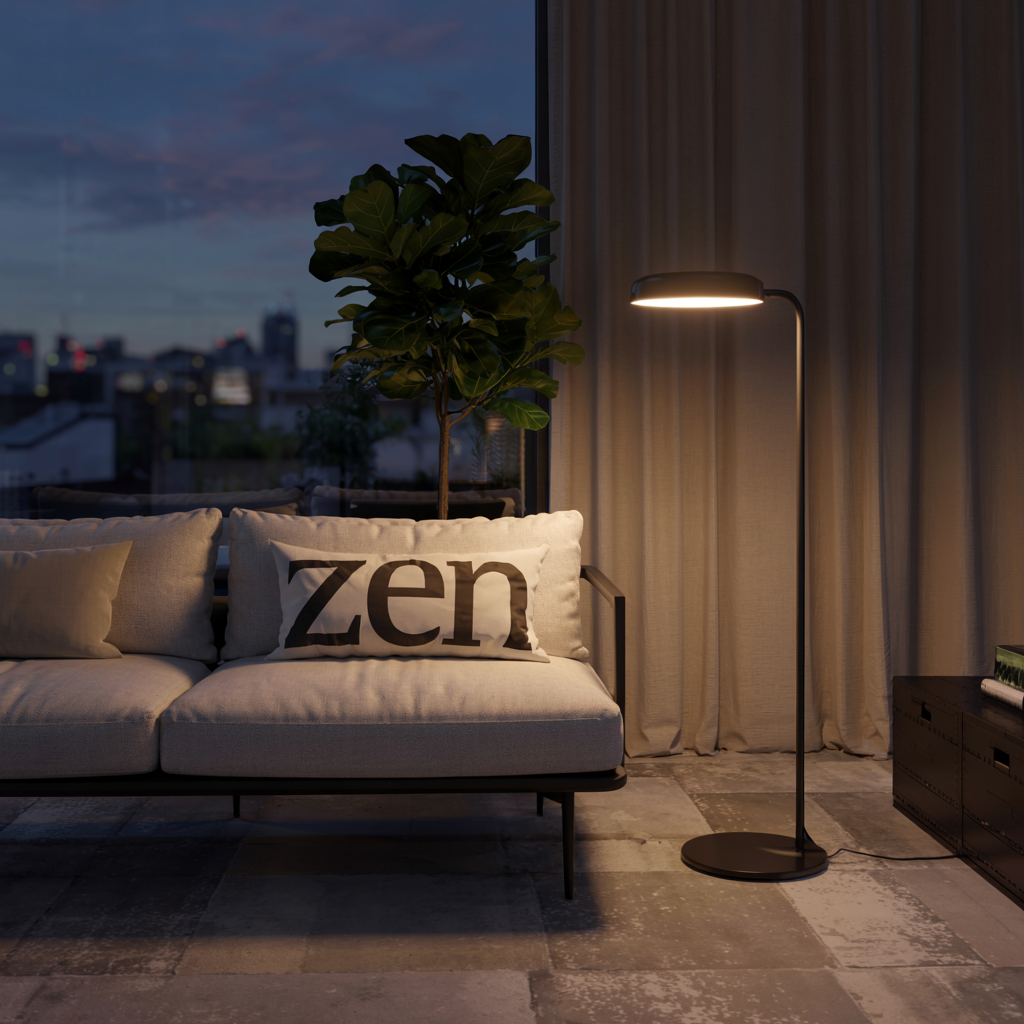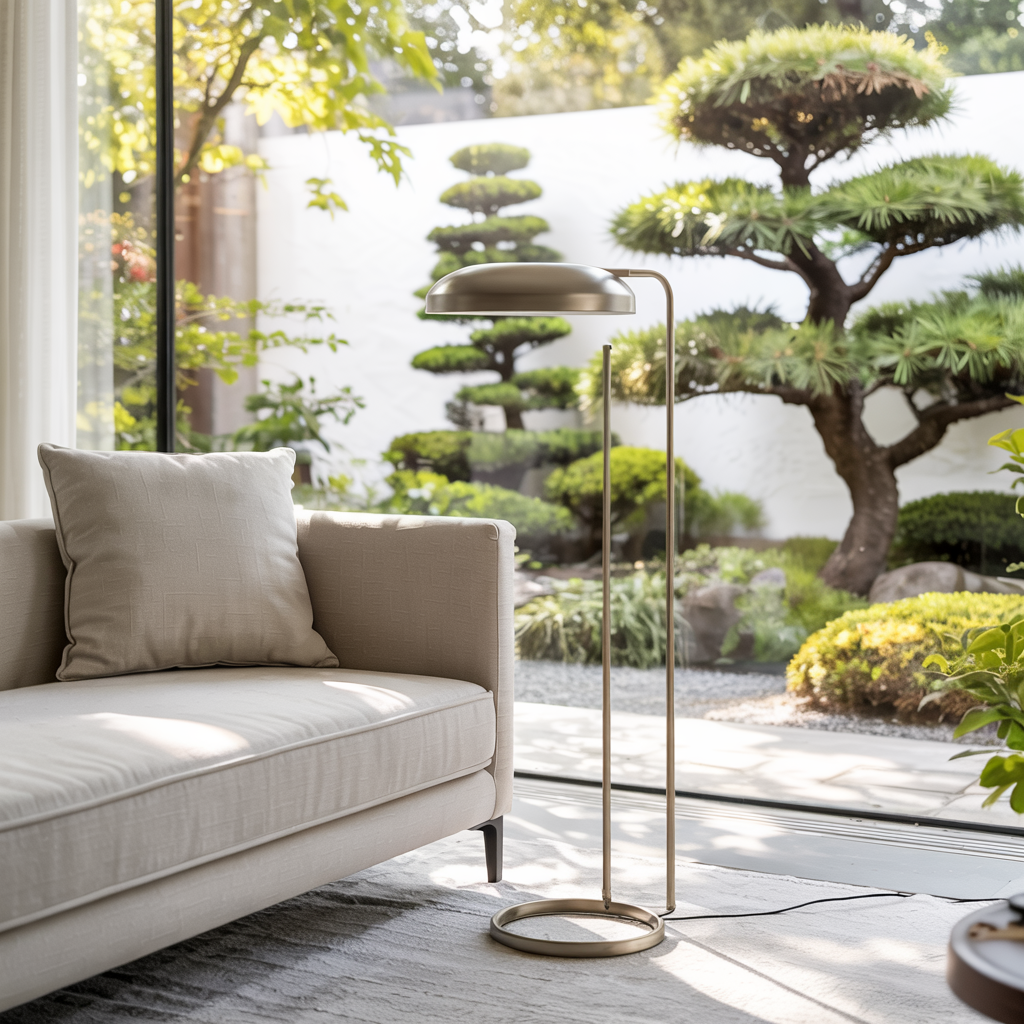Can Light Layout Living Room? The Straightforward Answer For You
Designing a living room that feels bright, airy, and inviting often hinges on maximizing natural light. This guide explores various techniques and strategies to achieve a light and airy living room, catering to both beginners and experienced interior design enthusiasts. We’ll delve into the importance of window treatments, furniture placement, color palettes, and much more…
Designing a living room that feels bright, airy, and inviting often hinges on maximizing natural light. This guide explores various techniques and strategies to achieve a light and airy living room, catering to both beginners and experienced interior design enthusiasts. We’ll delve into the importance of window treatments, furniture placement, color palettes, and much more to help you create the perfect light-filled space.
Natural light significantly impacts the mood and ambiance of a living room. More than just illumination, it influences our perception of space, making rooms feel larger and more welcoming. Insufficient natural light can lead to a cramped and gloomy atmosphere, negatively affecting the overall comfort and functionality of the room. This section will explore the psychological and practical benefits of embracing natural light.
Can Light Layout Living Room? Simple Answer
For a living room, space can lights 4 to 6 feet apart, starting 2 to 3 feet from walls. Place lights evenly in a grid or follow room features like seating areas or artwork. Use dimmers for flexibility, and combine with floor or table lamps for layered lighting.
Assessing Your Living

Room’s Natural Light Potential
Analyzing Window Placement and Size
Begin by carefully examining your living room’s windows. Their size, location, and orientation (north, south, east, west) directly affect the amount and quality of sunlight entering the room. South-facing windows generally receive the most direct sunlight, while north-facing windows provide more consistent, but softer light.
Identifying Obstructions Blocking Natural Light
Large furniture, overgrown trees, or poorly placed buildings can significantly reduce the amount of natural light reaching your living room. Consider removing or repositioning obstructive elements to optimize light penetration.
Read More: Can You Light a Candle in a Hotel Room? A Comprehensive Guide
Optimizing Window Treatments for Maximum Light
Window treatments play a crucial role in managing and maximizing natural light. While curtains and blinds offer privacy and light control, choosing the right ones is crucial. Sheer curtains allow for ample diffused light while maintaining privacy, while Roman shades offer more light control. Consider the material and color – lighter colors reflect more light than darker ones.
Strategic Furniture Placement for Light Enhancement
Furniture arrangement can either enhance or hinder the flow of natural light. Avoid placing large pieces of furniture directly in front of windows, which can block the light. Instead, opt for lighter-colored furniture and arrange pieces strategically to allow light to bounce around the room.
The Power of Color Palettes in Brightening a Room
Light and bright color palettes are crucial for maximizing the impact of natural light. Opt for lighter shades on walls, floors, and ceilings to reflect light and create a sense of spaciousness. Accents of bolder colors can be introduced through furniture and accessories, but keep the overall palette light and airy.
Using Mirrors to Reflect and Amplify Light
Strategic placement of mirrors can significantly increase the amount of natural light in a living room. Position mirrors opposite windows to reflect sunlight deeper into the room, effectively doubling the light’s reach. Consider using a large statement mirror or several smaller mirrors strategically grouped.
Incorporating Light-Colored Flooring
Floor coverings play a substantial role in light reflection. Dark-colored floors absorb light, while lighter colors, such as white, beige, or light gray, reflect it. Consider using light-colored rugs or carpets to amplify the existing light.
Read More: Perfecting Your Living Room Lighting: Where To Place Pot Lights
The Importance of Decluttering and Minimalism

Cluttered spaces feel darker and smaller than they actually are. Decluttering and adopting a minimalist approach can significantly improve the light and airy feel of your living room. Remove unnecessary items, keeping only essential furniture and decorative pieces.
Utilizing Artificial Lighting to Complement Natural Light
While natural light is paramount, supplementary artificial lighting is essential, especially during evening hours. Layer different lighting types – ambient, task, and accent – to create a warm and inviting atmosphere. Opt for energy-efficient LED bulbs that produce bright, natural-looking light.
Choosing the Right Lighting Fixtures
Ambient Lighting
Ambient lighting provides overall illumination. Consider using recessed lighting, chandeliers, or track lighting to evenly distribute light throughout the room.
Task Lighting
Task lighting focuses light on specific areas, such as reading corners or workspaces. Table lamps, floor lamps, and desk lamps provide focused illumination.
Accent Lighting
Accent lighting highlights artwork, architectural features, or decorative pieces, adding depth and visual interest to the space.
Read More: 15 Brilliant LED Closet Lighting Ideas to Brighten Up Your Wardrobe
The Role of Plants in Enhancing Natural Light
Indoor plants can surprisingly improve the perception of light. Greenery adds a refreshing touch and brings life to the space. However, carefully consider the placement of plants – placing tall plants near windows can obstruct sunlight.
Comparing Different Window Treatment Options
Different window treatment options offer varying levels of light control and privacy. Sheer curtains offer maximum light transmission, while blackout curtains block almost all light. Blinds provide adjustable light control, while Roman shades offer a more elegant look.
Addressing Challenges in Low-Light Living Rooms
Many living rooms lack optimal natural light due to limited windows or unfavorable orientation. In such cases, strategies like using lighter colors, maximizing light reflection, and incorporating effective artificial lighting become even more crucial. Consider adding skylights or installing tubular daylighting devices to increase the amount of natural light.
DIY Projects to Boost Natural Light
Simple DIY projects can significantly enhance natural light. Replacing heavy curtains with lighter ones, cleaning windows regularly, and adding a mirror strategically can make a noticeable difference. These projects are cost-effective and can be undertaken with minimal effort.
Maintaining a Clean and Organized Space
A clean and organized living room automatically appears brighter and more spacious. Regular cleaning and decluttering help prevent dust and grime from absorbing light, ensuring that your living room remains bright and inviting.
The Impact of Interior Design Styles on Light
Different interior design styles inherently lend themselves to varying levels of light. Minimalist and Scandinavian styles generally prioritize natural light, incorporating light color palettes and simple furniture. However, even traditional or eclectic styles can be adapted to incorporate strategies for maximizing natural light.
Frequently Asked Questions
What is the best way to increase natural light in a dark living room?
A combination of approaches is best. Start with lighter paint colors on walls and ceilings. Then, consider strategically placed mirrors to reflect light. Finally, evaluate your window treatments – lighter fabrics or even removing heavy curtains can make a huge difference. If needed, supplement with brighter artificial lighting.
How can I make my living room feel bigger and brighter?
Light colors are key. Light-colored walls, floors, and furniture reflect light and make the room feel more expansive. Decluttering is also vital; less clutter equals more spaciousness. Strategically placed mirrors can further enhance the feeling of openness and brightness.
What are some affordable ways to improve natural light?
Cleaning your windows regularly is free and surprisingly effective. Replacing heavy curtains with sheer ones is a relatively inexpensive upgrade. You can also find affordable mirrors at most home goods stores.
Final Thoughts
Creating a light and airy living room is achievable through a combination of thoughtful design choices and practical strategies. By carefully considering window treatments, furniture placement, color palettes, and lighting, you can transform your living space into a bright, welcoming, and inviting haven. Remember, even small changes can make a big difference in the overall ambiance of your room. Start by assessing your current living room’s light situation and implement these tips gradually to see a transformation in your living space. Don’t hesitate to experiment and find what works best for your home and your personal style. Embrace the power of natural light and enjoy a more vibrant and uplifting living room!

